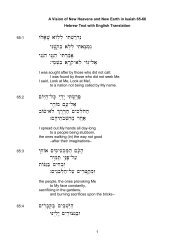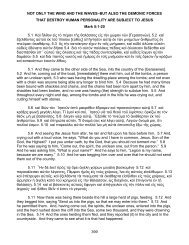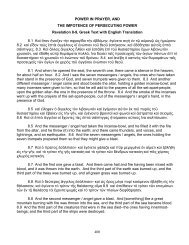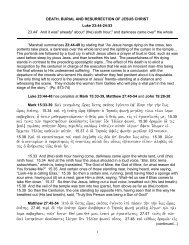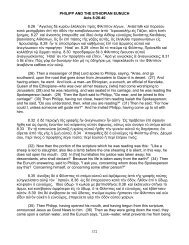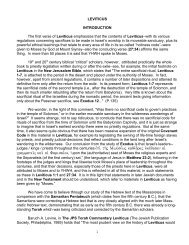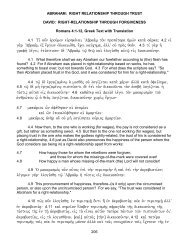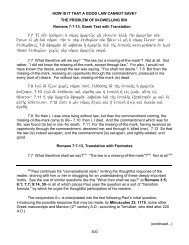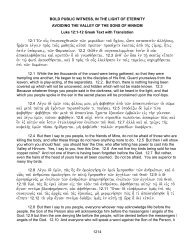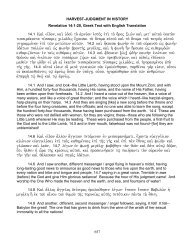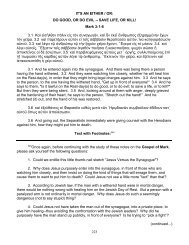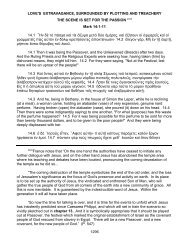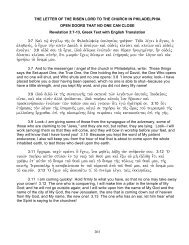Revelation 3:14-22 - Indepthbible.org
Revelation 3:14-22 - Indepthbible.org
Revelation 3:14-22 - Indepthbible.org
Create successful ePaper yourself
Turn your PDF publications into a flip-book with our unique Google optimized e-Paper software.
<strong>Revelation</strong> 3:<strong>14</strong>-<strong>22</strong>, Translation with Footnotes:<br />
445<br />
3.<strong>14</strong> And to the messenger / angel of the church in Laodicea, write: These things<br />
445<br />
The city of Laodicea was located in southwestern Phrygia, a part of the Roman<br />
Province of Asia, in what is now western Turkey. The Seleucid King Antiochus II founded the<br />
city in the third century B.C., naming it after his wife Laodice. The city was built in the fertile<br />
Lycus Valley, on the south bank of the Lycus River, a tributary to the Maeander River--which<br />
flowed to the west, emptying into the Aegean Sea at the sea-port city of Ephesus.<br />
Six miles to the north of Laodicea was the city of Hierapolis and ten miles to the east<br />
was the city of Colossae. Laodicea was located at the juncture of some very important<br />
highways--the main highway running across Asia Minor passed through Laodicea as it came<br />
from the northeast, from Dorylaeum and northern Phrygia, and then led to the sea-port cities<br />
of Ephesus and Miletus, just a little over a hundred miles to the west. On that highway to the<br />
east was located the central plateau heartland of Asia, and beyond that, Syria. There was<br />
another road that ran from Laodicea to Philadelphia, Sardis, Thyatira, and Pergamum in the<br />
northwest. To the southeast from Laodicea, another highway ran to the Mediterranean coast,<br />
ending at the city of Attalia (in Pamphylia).<br />
Because of its location at this strategic crossroads, Laodicea became an increasingly<br />
prosperous commercial and administrative center in Roman times--indeed, the wealthiest city<br />
in Phrygia, the central section of western Asia Minor. So great was its prosperity that in 60<br />
A.D., when the city was destroyed by an earthquake, the Laodiceans were able to rebuild their<br />
city by themselves, without an appeal to Caesar Nero for financial assistance.<br />
Ancient Roman records show that Laodicea became an important center of banking<br />
and finance. Strabo writes concerning the distinctive products that came out of Laodicea--<br />
including fine linen clothing, and glossy-black wool from the sheep which were tended in large<br />
numbers in that area, and which furnished the raw material for the manufacture of widely<br />
renowned woolen garments and carpets.<br />
Laodicea had a notable medical center, famous for its medical school attached to a<br />
temple for Asclepius, the god of healing. That school became famous for its practice of<br />
ophthalmology, and the manufacture of a "Phrygian powder" which was used as a cure for<br />
weak eyes.<br />
However, Laodicea had one very noticeable disadvantage--having been built on a<br />
location determined by the crossing of important highways, it had no sufficient water supply of<br />
its own, and archaeological research has shown that the city was forced to pipe water from hot<br />
springs located to the south of the city--water that was very hot, even boiling at its source, but<br />
that lost most of its heat by the time it arrived in Laodicea--resulting in a great deal of encrustation<br />
in the remains of the stone water-pipes that have been found. The modern city of Denizli<br />
which is the descendent of Laodicea has been located much closer to those ancient hot<br />
springs.<br />
<strong>22</strong>9<br />
(continued...)



